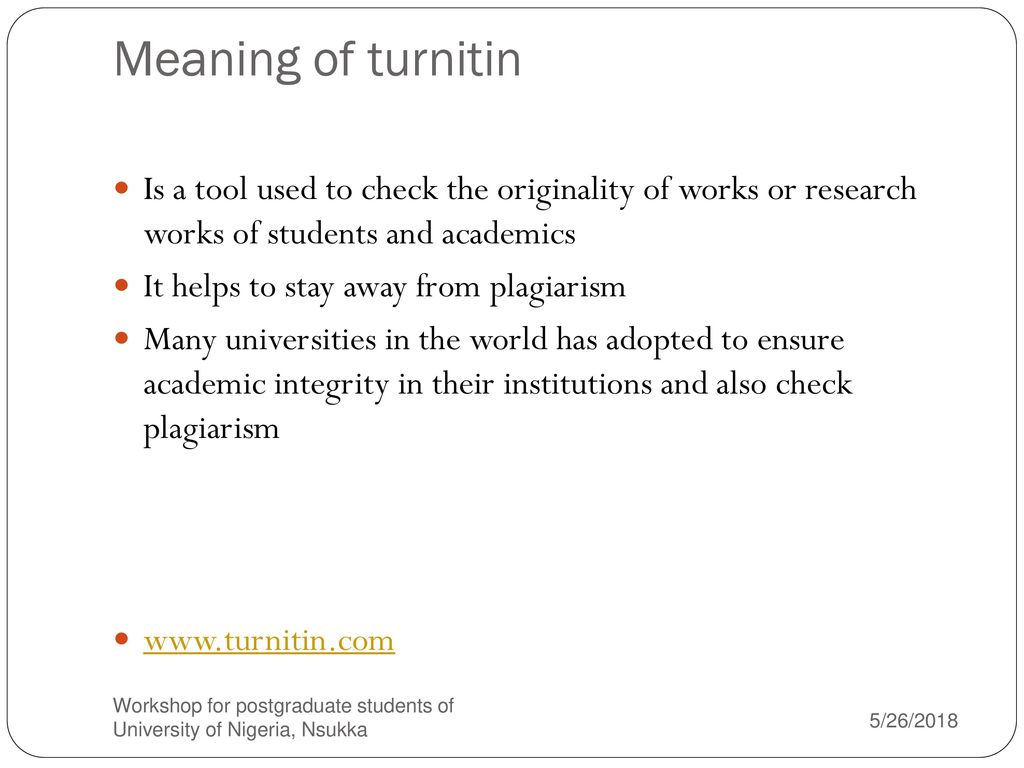
The essays submitted by students are stored in a database used to check for plagiarism. It scans its own databases, and also has licensing agreements with large academic proprietary databases. Turnitin checks for potential unoriginal content by comparing submitted papers to several databases using a proprietary algorithm. 2.2 Concerns about violation of student copyright in the United States.

Turnitin released Turnitin2 on September 4, 2010, dropping the "WriteCycle" nomenclature. WriteCycle bundles the Originality Checking service with its GradeMark online grading tools and PeerMark tools. Turnitin released the WriteCycle Suite on February 3, 2009. Other tools included with the Turnitin suite are GradeMark (online grading and feedback) and PeerMark (peer review) services. Parent company iParadigms, LLC, also offers a similar plagiarism detection service for newspaper editors, book and magazine publishers called iThenticate, and runs the informational website. Additionally, critics have alleged that use of the software violates educational privacy and intellectual property laws. This has been a source of criticism, with some students refusing to do so in the belief that requiring it constitutes a presumption of guilt. Students may be required by schools to submit essays to Turnitin, as a deterrent to plagiarism.
#TURNITIN MEANING HOW TO#
The results can be used to identify similarities to existing sources or can be used in formative assessment to help students learn how to avoid plagiarism and improve their writing.

Typically, universities and high schools buy licenses to submit essays to the Turnitin website, which checks the documents for unoriginal content. Turnitin is an Internet-based plagiarism-prevention service created by iParadigms, LLC.
#TURNITIN MEANING MAC OS X#
Internet (Support OS: Microsoft Windows XP SP2 Windows Vista SP 1, Mac OS X v10.4.11+)


 0 kommentar(er)
0 kommentar(er)
